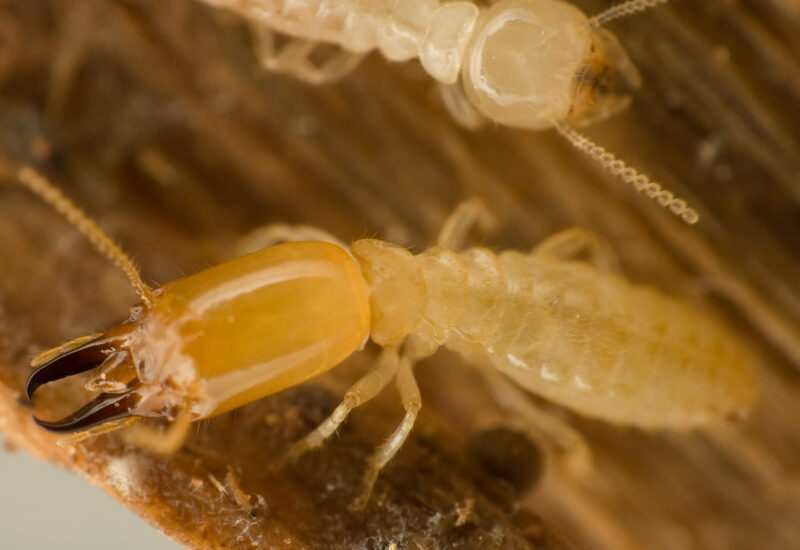Tick Habitat Preferences: Where Are Ticks Most Likely to Thrive?

As winter’s chill gives way to spring sunshine and warmer weather, a whole new season is gearing up — tick season. Although these troublesome pests can be active year-round, they tend to be more widespread from April through November.
These creepy-crawlies feed on the blood of their hosts, including humans, dogs, cats, birds, reptiles, amphibians, and other mammals. During the feeding process, ticks can transmit any bacteria, viruses, or parasites they carry and infect their hosts. The United States Centers for Disease Control and Prevention (CDC) estimates that nearly 500,000 Americans are diagnosed with Lyme disease each year due to tick bites, and that’s just one of the potential pathogens that ticks carry.
Other potentially serious illnesses include Powassan virus, Rocky Mountain spotted fever, and anaplasmosis. Alpha-gal syndrome, which is a red meat allergy believed to be triggered by the bite of the lone star tick, is another growing concern in many areas. In worst case scenarios, this syndrome can be life threatening.
Catseye Pest Control has spent decades helping people and businesses throughout the region prevent and eliminate ticks with professional tick pest control. Proactive measures, including identifying common ticks and where they are likely to live, can help you and the people you care about stay healthy and safe throughout tick season.
Types of Ticks Found in New England
Worldwide, more than 900 species of ticks prey on humans and animals throughout the year. These species fall into two main categories: hard ticks and soft ticks. Hard ticks, including the Lyme disease-carrying black-legged tick, tend to feed on humans, pets, and wildlife. Soft ticks, which belong to the Ornithodoros genus, lack the hard “plate” on their backs and have a wrinkled-looking body. They typically feed on hosts like bats and birds but can bite humans as well.
Hard ticks are the most common type of ticks found in New England and include the American dog tick, black-legged tick, brown dog tick, and Asian longhorned tick.
American Dog Tick
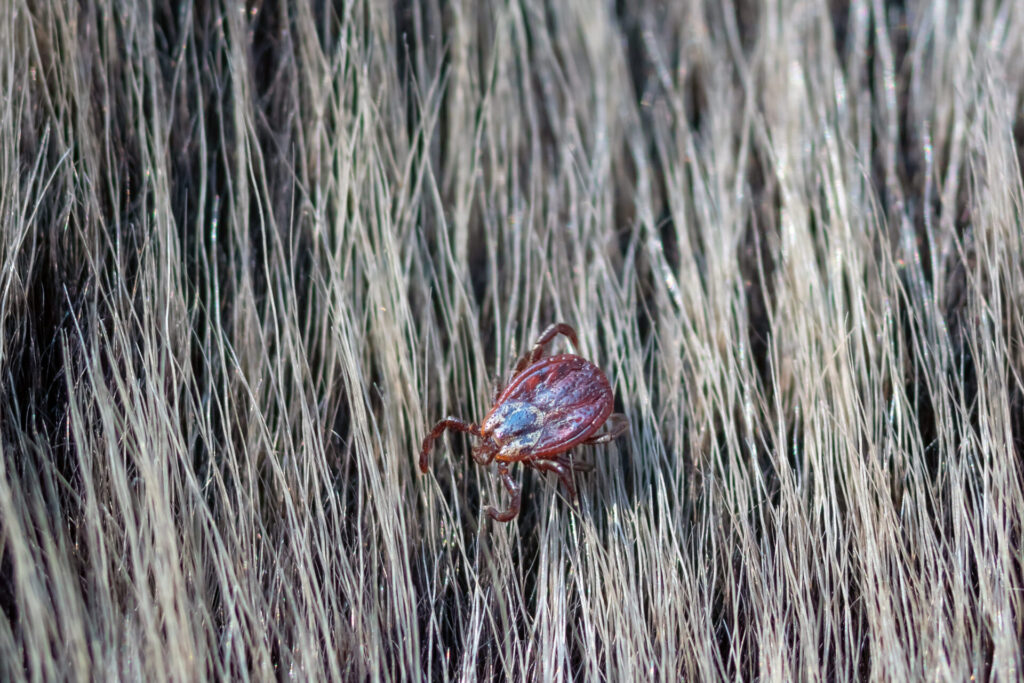
Dogs are the preferred host of American dog ticks, sometimes referred to as wood ticks. Still, these ticks will bite people and other hosts, including rodents, raccoons, and cats. These hard ticks can transmit germs that cause Rocky Mountain spotted fever and tularemia throughout their lifecycle.
Preferred habitats: edges of forests, grassy fields, and perimeters of trails and walkways
Black-Legged Tick
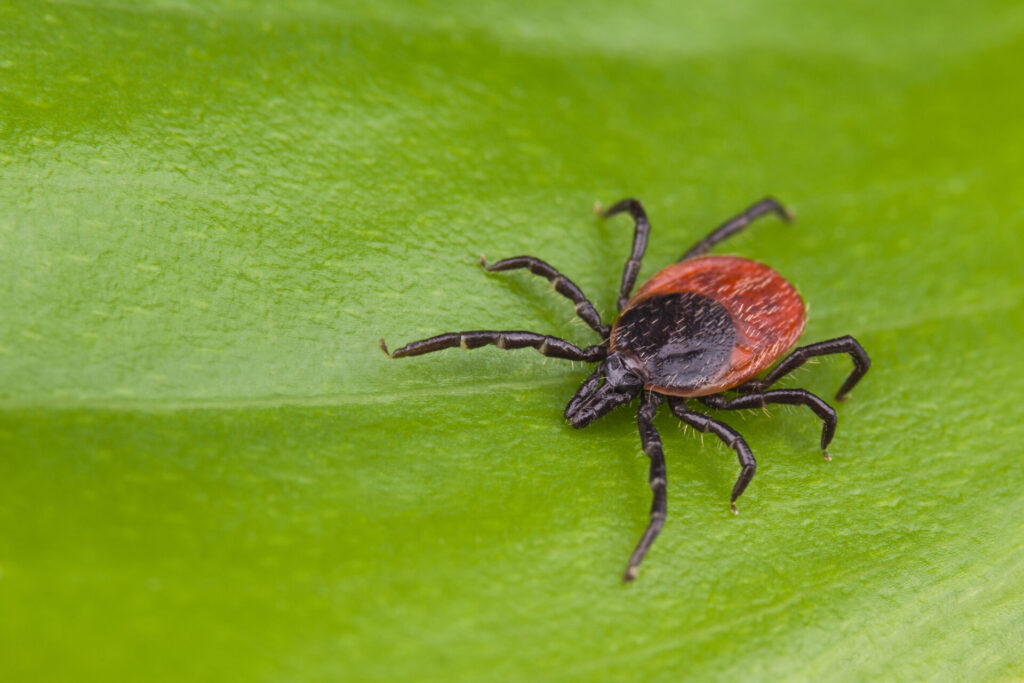
The black-legged tick, also known as the deer tick, prefers feeding on white-tailed deer. In its nymph and adult female life stages, it can spread Lyme disease as well as anaplasmosis and babesiosis. Adults are often active from spring through fall, with females laying eggs in mid-to-late May. Eggs hatch later in the summer, continuing the lifecycle.
Preferred habitats: forest edges, tall grasslands, and shrubs
Brown Dog Tick
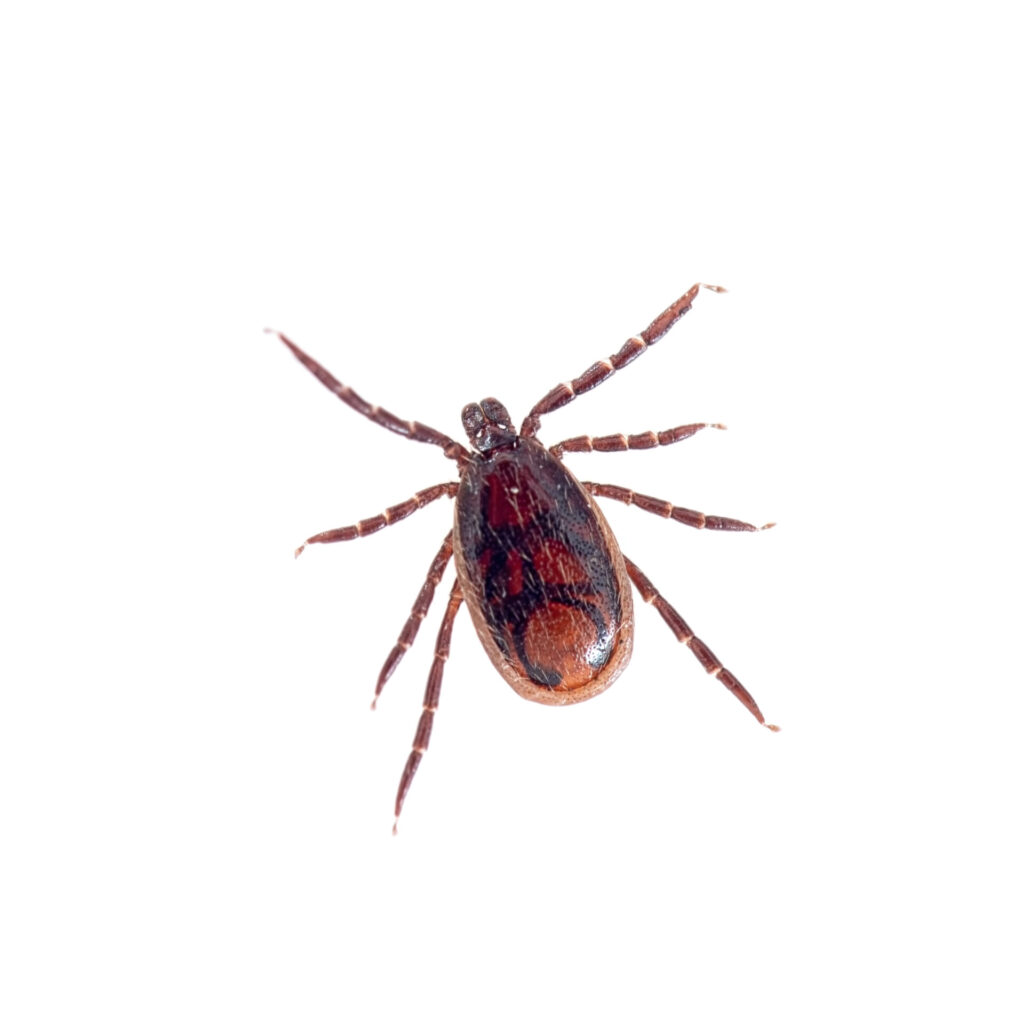
Although brown dog ticks are more common throughout the southern U.S., they are among the most common here in New England. They often spend their entire lives indoors, taking up residence in homes, dog kennels, and animal pens. Brown dog ticks can spread multiple diseases, including canine babesiosis, canine ehrlichiosis, and Rocky Mountain spotted fever. These ticks typically don’t bite humans, instead preferring to feed on canine hosts.
Preferred habitats: human dwellings, dog kennels, dog parks, and overgrown grass and weeds
Asian Longhorned Tick
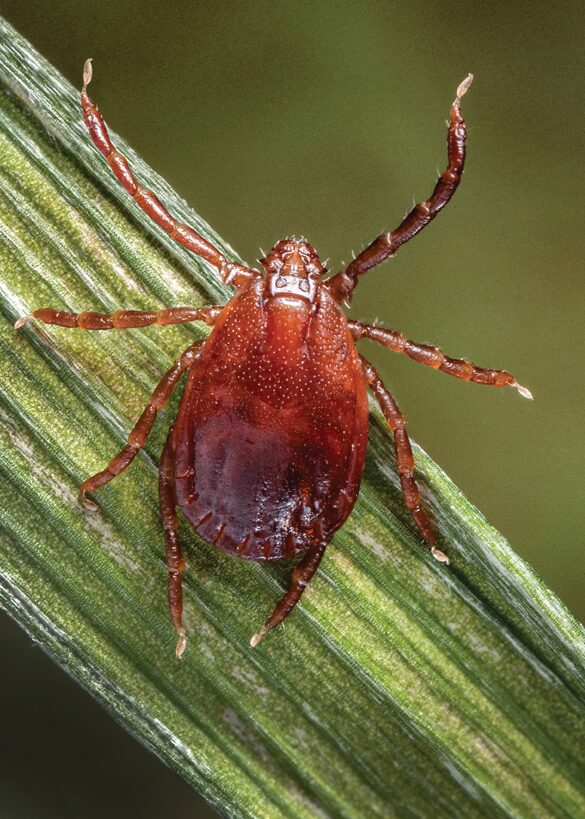
These invasive ticks were first identified in the U.S. in 2017. Although the first identification occurred in New Jersey, this tick has since spread across much of the Eastern part of the country. Asian longhorned ticks typically feed on livestock and wildlife, and females can produce thousands of offspring without any involvement from males. These ticks are known to impact animals’ health, but research into their effects on humans remains ongoing.
Preferred habitats: pastures, meadows, brushy areas, and debris piles
Woodland and Forest Habitats
Ticks are more abundant in forests and woodlands than any other habitats. Scientists believe that the mix of trees and vegetation and abundant hosts like wildlife and rodents are likely the key contributing factors. Additionally, the increased humidity found in forest settings better supports tick populations, although urban green spaces, including woodlands, can also harbor these blood-drinking pests.
Grasslands and Fields
Ticks are ground dwellers that thrive in warm, humid areas. Many ticks, including the American dog tick and black-legged ticks, make their homes in the shelter of tall, grassy areas like fields, meadows, and grasslands. While keeping grass neatly trimmed can help with tick prevention, it’s not a guarantee that ticks won’t invade. Ticks have also been found on groomed sports fields, particularly early on dewy mornings.
Urban and Residential Areas
Cities, suburbs, towns, and residential areas are not immune to ticks. Ticks can travel from forests and fields via wildlife, allowing them to invade nearly any area. Although tick populations tend to be higher in forests and fields, they also thrive in areas such as:
- Wood piles
- Leaf piles and outdoor debris
- Overgrown shrubs
- Tall grass
- Fallen branches
- Bird feeders
- Dog kennels and indoor structures
Moisture and Temperature Preferences
Some ticks will dehydrate and die in high temperatures with low humidity levels. Others simply prefer warm, moist areas. In general, ticks thrive in moist, humid conditions, which is why tick populations often increase after heavy rains. Additionally, these cold-blooded pests typically slow down in cool weather to conserve energy. On the flip side, when temperatures warm, tick activity increases. Temperatures of 70 to 90 degrees Fahrenheit are optimal for ticks to breed and generally live their best lives.
Tick Prevention
Knowing where ticks tend to live and hang out is only one piece of the tick prevention puzzle. Avoiding areas filled with high grass, leaf litter, brush, and dense woods is a good starting point for avoiding ticks. Other preventive steps you can take include the following:
Reducing the Risk of Tick Bites
- Treat clothing and camping or hiking gear with products that contain 0.5% permethrin or buy already treated clothing.
- Use insect repellents registered with the Environmental Protection Agency (EPA) that are approved to repel ticks.
- Walk in the center of trails and pathways.
- Wear long-sleeved shirts and pants tucked into socks.
- Perform full body checks, including clothing and gear, when returning inside.
- Shower within two hours of being outside.
- Check pets for ticks after bringing them indoors.
Eliminating Tick Habitats
- Keep lawns mowed with grass lengths that are no higher than 3 inches.
- Remove all brush, debris, and leaf litter from the property.
- Add a 3-foot barrier around the yard with crushed stone.
- Thin out shrubs and hedges.
Contact a Tick Pest Control Expert
You don’t have to battle these dangerous pests alone. Ticks, which belong to the spider family known as arachnids, pose a significant health risk to humans and pets. Working with pest professionals can help you pinpoint the right preventive measures to take. Additionally, professional intervention gives you access to innovative treatment programs like Catseye’s tick pest control program, which includes all-natural treatments for year-long peace of mind.
Learn more by clicking the link above or by calling Catseye at 888-298-2173 to speak with someone who can answer any questions you may have.




